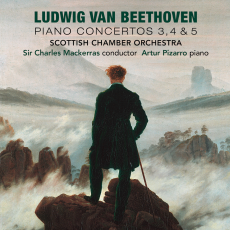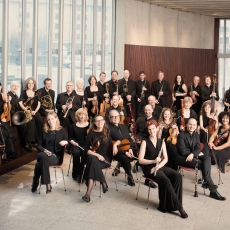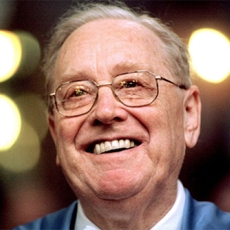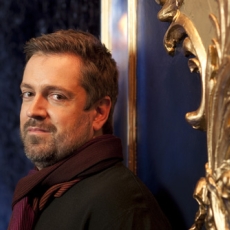Beethoven Piano Concertos 3, 4 & 5 - SACD.net
The combination of Sir Charles Mackerras and the Scottish Chamber Orchestra has already produced memorable recordings. Now the young Portuguese pianist Artur Pizarro joins the octagenarian conductor in Beethoven concertos - a little reminiscent of the fruitful collaboration of the younger Barenboim with Klemperer in the same works. Linn's sessions took place at the acoustically agreeable Perth Concert Hall in Scotland from 2nd-5th November 2008. It was originally intended to record only Concertos 3 and 4, but the music went so well that it was agreed that the 5th had to be added. The result is issued in a double-disc Digipak for the price of one disc - including an obligatory Romantic cover painting by Caspar David Friedrich.
Mackerras and the SCO have long since worked out a way of using mostly modern instruments in their historically aware interpretations. Strings play with minimal vibrato, bowing and phrasing is generally shorter, natural (valveless) trumpets are used, horns sometimes play in period fashion without using the valves and kettledrums are hit with hard sticks. Sir Charles generally brings his own parts, meticulously marked up, so that, as he says, everyone can get started immediately. In this case, Pizarro also uses a Blüthner piano, an interesting choice, less assertive in character than a Steinway and thus more suitable for working with a chamber orchestra. The Blüthner also has a faster build-up of tone after key strikes than a Steinway, and is more tonally varied over its range, with a rich and well articulated bass, singing middle range and a bell-like upper treble. These characters are not too far from the tone of some wooden frame period pianos and thus appropriate to this recording.
Beethoven's first sketches for the Third Piano Concerto involved a kettledrum motif which appears in several crucial places in the final version, and the first movement is undoubtedly militaristic in character. Mackerras opens battle in stealth mode, and the natural trumpets and kettledrums later on emphasise more martial references. Pizarro follows the orchestra's lead and plays eloquently but without soloistic mannerisms; indeed one might almost view this interpretation as a symphony with piano obbligato. With convincing clarity, the players bring to prominence Beethoven's contrasts between tense minor key episodes and relaxed lyrical passages in major keys. Beethoven's longer cadenza is used by Pizarro, to great effect.
Pizzaro brings a hushed inwardness to the cantilena of the slow movement, with the SCO's bassoon and other wind players contributing greatly to its peaceful atmosphere. Mustonen (Beethoven: Piano Concerto No. 3 - Mustonen), however, scores points here: he has noted that a few minutes into the movement, the mutes are removed from the cellos and basses while the violas and violins remain muted, and thus he gently reveals a lovely flowing countermelody at this point. Sir Charles' Finale crackles with energy and fine rhythmic pointing, but the military elements are not far away, kettledrums making this point again clearly towards the end.
The Fourth Concerto broke new ground for piano concertos, starting off immediately with the soloist and eschewing the normal double exposition of tutti first, then solo. The exquisitely voiced first G major chord is played gently and unassumedly - except that Pizarro rather draws attention to it by arpeggiating it. Many will shake their heads at such effrontery, as a spread chord is certainly not indicated in any of the editions, including the New Beethoven Edition. However, such a device was one of many in the armoury of C19th pianists. Sir Charles and the orchestra reveal a great deal of lovely instrumental detail in the first movement, warmly lyrical and glittering in equal measure, with filigree finger-work. Beethoven's own cadenza has been used.
The SCO's biting, resinous and vibrato-less strings are waspish in their dramatic opening to the famous slow movement - Furies which are gradually quieted by the soloist, who repeatedly offers balm and tranquillity. Beethoven instructs the pianist to play at the outset on only one string, then two and gradually move to three. This effect is hardly possible on many modern pianos, which mostly use a single felt damper for muting tone, but the Blüthner soft pedal moves the keyboard to the right, giving 'una corda'.
The 4th Concerto's G major rondo is one of Beethoven's happiest creations, alternately exuberant and delicately lyrical, played here with enormous affection and flair by soloist and orchestra; it makes one smile at its cheeky woodwind asides and heady pianistic roulades.
For me, the star performance of this set is that the Fifth Concerto. Everything seems to be right here; the SCO produces a wonderfully refulgent tone without dynamic exaggerations, and the interactions between soloist and accompaniment are thrillingly spontaneous. Mackerras' meticulous internal balancing of the score opens it up and reveals a myriad of fascinating orchestral details, and Pizarro's scrupulous attention to Beethoven's markings prevents an over-romantic approach which so often fogs this masterpiece. And at last we have a pianist who plays the opening arpeggio flourish exactly as written, without the spurious holding on to the first note for effect, which has sadly become a modern playing tradition. Beethoven wrote a headlong rush straight up the piano, and that is what Pizarro gives us. The rhythmic lift given to the main subject by both orchestra and soloist is utterly delightful; the tuttis are vigorous and forceful without being opaque and noisy, and the whole first movement is gripping in its tautly dramatic approach.
One would hardly believe that as Beethoven began to write the brief slow movement, Napoleon's troops invaded Vienna. He ended up crouching terrified in a cellar, calling plaintively for his mother. Yet this seemingly perfectly peaceful movement was finally created. In Mackerras' hands, it moves flowingly with vernal freshness. Pizarro's tender caressing of the high treble melody breathes naturally, without cloying sentimentality, and the hushed modulation at the end from B major to E flat major is magically done. Thereafter, the famous 'kangaroo' tune bounds unceremoniously in, (appropriately enough from an Australian conductor) and is given such a lilting rhythm that it must be a Viennese kangaroo! I have only once before heard a similarly dancing Rondo; it would itself justify Wagner's remark about the finale of Beethoven's 7th Symphony as "the apotheosis of the dance".
From the sheer quality and intensity of the music-making on these discs, I would surmise that they are mainly comprised of long takes. The perfectly judged balance between band and piano makes it one of the most natural and impressive concerto recordings for some time; piano and orchestra are both firmly in the same acoustic, and the depth of audio field given by multichannel gives a clear focus to the SCO, who are playing their socks off.
Great value for two excellent Beethoven concertos, and one exceptionally fine Fifth Concerto, which in my view stands up with the modern great ones. This issue is a fine addition to the much-lauded Mackerras/SCO late Mozart Symphonies.



